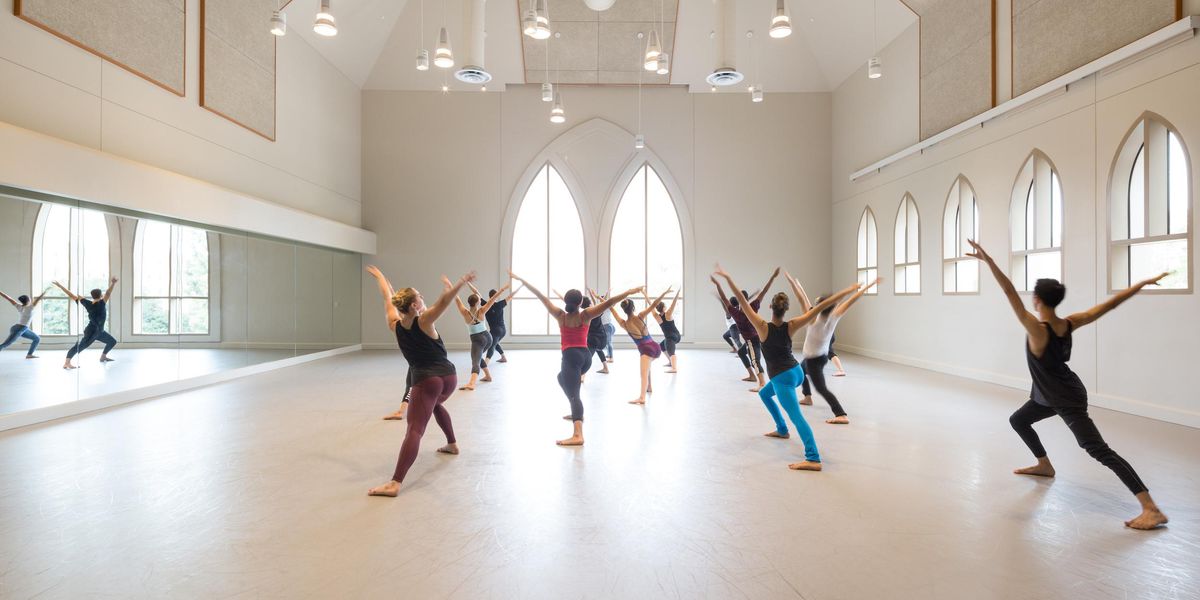Transitions
Deaths
Fayard Nicholas (1914–2006)
The elder and taller of the brilliant Nicholas Brothers, Fayard was known as “having the best arms and hands in the business.” His fluid torso and eloquent hands wove poetry in counterpoint to the complex tapping. Watching this perfect tap duo, it was difficult to know where Harold (who died in 2000) ended and his brother began. But Fayard was the primary choreographer. In 1989 he created the witty tap number, “I Want a Big Butter and Egg Man” for Broadway’s Black and Blue, whose choreographers received the Tony Award that year. Sons of vaudeville musicians, the boys grew up around music and in the theater. They made their debut as the Nicholas Brothers when Fayard was 14 and Harold was 7 and were instantly successful in theater, vaudeville, and movies. The charming child performers grew into astonishing adult dancers who combined classic finesse and hard attack with daring acrobatic jumps and splits. The brothers appeared in more than 30 movies and received a Dance Magazine Award in 1995. Check out the 1943 film Stormy Weather. “Jumpin’ Jive,” their spectacular number with Cab Calloway, will live forever in memory. —Sally Sommer
Rebecca Wright (1947–2006)
Although the Joffrey Ballet promoted its “all star/no star” policy, Rebecca Wright, who danced there from 1966–1975, was indisputably a star. Sadly, after a prolonged battle with cancer, her star faded on January 29.
A dancer of remarkable precision and power, Wright seemed incapable of marking a rehearsal—she always danced full-out. Able to move instantly from pointe shoes to sneakers, she embodied the versatility of the Joffrey style. In Ashton’s The Dream, Wright’s Titania had impeccable footwork, clearly shaped port de bras, and infallible musicality. Wright demonstrated her allegro showmanship in Arpino’s Kettentanz, Trinity, and Valentine, as well as in Tharp’s Deuce Coupe. Later, at American Ballet Theatre, she excelled as a spunky Swanilda in Coppélia and sailed through the technical demands of Theme and Variations. On Broadway, she played a spry unicorn in the musical Merlin.
Later Wright served as the ballet master for Twyla Tharp’s company, director of both the Adelphi University and Joffrey/New School dance programs, and artistic director of ABT’s summer training intensives. Since the fall of 2004, Wright directed the Washington School of Ballet, succeeding Mary Day.
Christian Holder, who often danced with Wright at the Joffrey, said, “Becky’s smile lit up every room she entered, just as her personality lit up every stage on which she performed. She made a wonderful contribution to dance from the ’60s–’80s and in administration up to the present. I loved her very much, and still do.” —Joseph Carman
Moira Shearer (1926–2006)
With the groundbreaking 1948 movie The Red Shoes, she probably inspired more girls to dream of ballerinadom than anyone since Anna Pavlova. And yet it was a dream that eluded its Scottish-born star Moira Shearer herself. It was a film, she confided to me in a Dance Magazine interview in the 1960s, that she never wanted to make. Although it was the beginning of a promising film career, it also proved the beginning of the end of her serious dance aspirations.
With her red hair and commanding personality, she was a dancer of delicacy, style, and musicality. She made her debut with Mona Inglesby’s International Ballet in 1941, and joined the Sadler’s Wells Ballet a year later. She instantly caught the eye of Frederick Ashton, who created the role of Pride for her in his ballet The Quest. As a schoolboy seeing her then, I was bewitched. So was Ashton, who also put her into Symphonic Variations in 1946, and two years later cast her as his first Cinderella.
She danced, with charm and almost infinite promise, the roles of Aurora, Odette/Odile, Giselle, and Swanilda. In 1948 Massine created the lead role for her in Clock Symphony, and two years later she was the favorite interpreter for Balanchine (she wrote a biography of him after his death) in his Ballet Imperial. In Paris Roland Petit revived his Carmen for her. Yet her career, peaking early, never matched that of the company’s senior ballerina, Margot Fonteyn. During the early 1950s she drifted away from ballet, concentrating on movies, the theater, and later writing. But Moira crossed the dance sky like a comet…never to be forgotten. —Clive Barnes
Maclovia Ruiz
, identified as the first dancer of color to perform in a major American company, died last New Year’s Eve at age 95. Born in Mexico and raised in San Francisco, Ruiz performed with the San Francisco Ballet, Balanchine’s American Ballet Company, and the Metropolitan Opera Company. Her solo in Bizet’s Carmen, choreographed by Balanchine, made her famous.
Remembered for her great enthusiasm and energy, dance teacher Gertrude Hallenbeck died last December. Her ballet, jazz, tap, and ballroom training was passed on to her students at The Hallenbeck School of the Dance in Albany, New York.
Ballet dancer, teacher, choreographer, and painter Paul Grinwis, 85, died last January in Gent, Belgium. Grinwis founded the Gent Ballet Academy.
Retirement
Last January New York Foundation for the Arts held a “Ted Fest,” a gala for retiring executive director Ted Berger. Hosted by Kathleen Chalfant, the evening included a performance by Nicholas Leichter Dance and other New York artists.
Wedding
In January American Ballet Theatre soloist Erica Cornejo married Boston Ballet principal Carlos Molina in Colombia. Members of Molina’s family hosted the ceremony at their home overlooking the mountains. Guests included Cornejo’s brother Herman and Maria Riccetto. The bride and groom took the rest of the weekend off before returning to their respective companies to resume rehearsing and performing.
Birth
Chan Hon Goh
, principal dancer with the National Ballet of Canada and founder of the dance shoe company Principal by Chan Hon Goh, and her husband Chun Che, teacher and choreographer, are proud parents of a baby boy. Aveary Gene Leon Che was born in February; he weighed 7.7 pounds.




